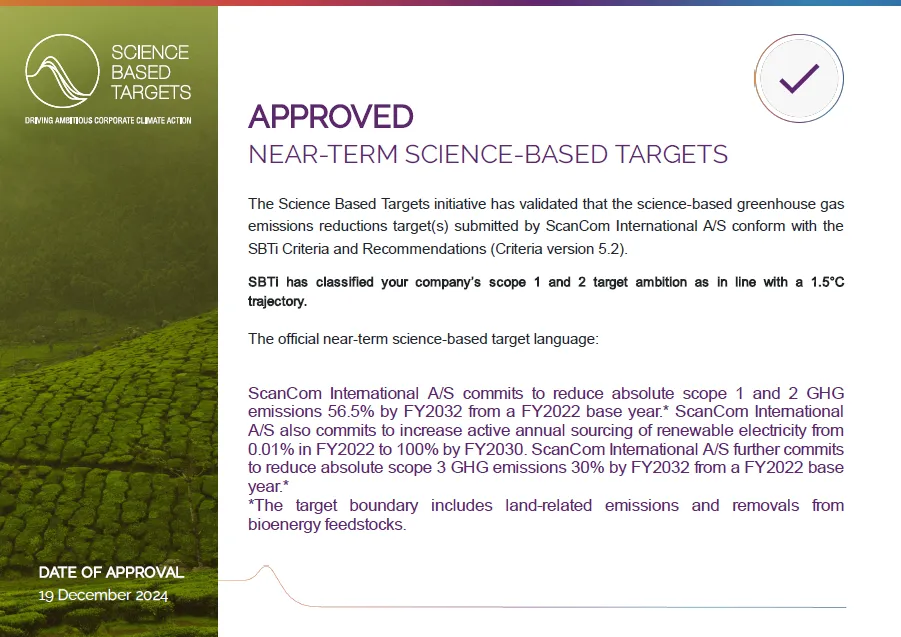
As the world grapples with pressing environmental challenges, there is a growing recognition of the need for greater accountability and transparency in business practices. This is especially true in the furniture manufacturing industry, where sustainability concerns are increasingly coming to the fore. One significant development in this area is the push towards uniform environmental reporting, akin to annual financial reports. This movement is being driven by both legislative pressure and the evolving expectations of stakeholders – internal and external -, retailers and other partners. This article delves into the evolving landscape of environmental reporting, examining the key factors at play and what it may mean for furniture manufacturers and the industry.
Government and EU Legislation: Catalysts for Change
Governments and regulatory bodies, particularly within the European Union, are at the forefront of advocating for standardized environmental reporting. The EU’s Corporate Sustainability Reporting Directive (CSRD) is a prime example of such legislative efforts. This directive mandates that companies disclose detailed information on their environmental, social and governance impacts, thus fostering a culture of transparency and accountability. The rationale behind this legislative push is to ensure that companies, provide a clear and consistent picture of their environmental footprint, as well as to level the playing field, making it easier for investors, customers, and other stakeholders to assess a company's sustainable performance.
This move towards mandatory reporting is not without its challenges. For many manufacturers, particularly those operating on thin margins, the cost and complexity of complying with these regulations can be daunting. However, the overarching goal is to create a level playing field where environmental responsibility becomes a standard part of business operations.
Consumer Behaviour: A Potential Key?
Despite the legislative efforts, there is still a notable gap when it comes to consumer-driven change. While awareness of environmental issues is on the rise, this has not always translated into responsible purchasing decisions. Many consumers (and retailers) continue to prioritize cost and convenience over responsibly produced products, which can disincentivize manufacturers from investing in more responsible practices.
The lack of consumer push for change presents a significant hurdle. To bridge this gap, there needs to be a concerted effort to educate consumers about the environmental impact of their choices and the importance of supporting companies that prioritise responsible practices. By doing so, consumers can play a pivotal role in driving the industry towards more responsible practices.
Types of Manufacturers in the Industry
Within the furniture manufacturing industry, there are broadly two types of manufacturers: those that comply with regulations and those that go above and beyond.
- Compliant Manufacturers: These companies adhere to the minimum legal requirements but do not take additional steps towards greater environmental or social commitments. The primary reason for this is the high cost and complexity associated with implementing comprehensive environmental strategies. For these manufacturers, the focus is often on meeting the basic standards necessary to avoid penalties and maintain market access.
- Proactive Manufacturers: These are companies for whom working with ESG is a core value. These companies integrate environmental and social considerations into every aspect of their operations, from sourcing materials, production processes and product design to social responsibility for employees and impacted communities. For manufacturers this often means setting the industry standard by pioneering innovative practices and technologies that reduce environmental impact. Their commitment to responsible practices is driven by a genuine belief in its importance, as well as the recognition that it can be a key differentiator in a competitive market.
Meeting Retailer Demands: The Need for Transparency
Retailers are increasingly demanding greater transparency from manufacturers regarding their environmental practices. This is in response to growing awareness about the impact companies have on the environment as well as the desire to offer products that align with these values. For manufacturers, meeting these demands requires significant effort and investment – but does not necessarily equate to increased willingness to buy or increased perception of value of their products and services.
Transparency is key to building trust with both retailers and consumers. It involves not only disclosing environmental impacts but also demonstrating a commitment to continuous improvement. This can be achieved through regular environmental reports, certifications, and participation in sustainability initiatives. By providing clear and accessible information, manufacturers can differentiate themselves in the market and foster stronger relationships with their partners. At the same time, this also requires the retailers to be open and honest about their purchasing practices and criteria for working with new and existing suppliers.
Conclusion
The journey towards uniform environmental reporting is complex and demanding, but it is also an opportunity to redefine what it means to be a responsible and forward-thinking business. The move towards uniform environmental reporting represents a significant shift in the furniture manufacturing industry. Driven by legislative pressure and evolving stakeholder expectations, this trend is set to transform the way companies approach sustainability. While challenges remain, particularly in terms of consumer behaviour and the cost of compliance, the benefits of greater transparency and accountability are clear.
For manufacturers, the choice is between merely complying with regulations or taking a proactive approach towards more responsible practices. Those that choose the latter will not only contribute to a more responsible conduct but for those willing to embrace the challenge, the rewards are manifold. Enhanced transparency and accountability can strengthen relationships with retailers and consumers, drive innovation, and position companies as leaders in responsible practices.
As the push for uniform ESG reporting gains momentum, it is crucial for all stakeholders to work together to support and accelerate this positive change.






